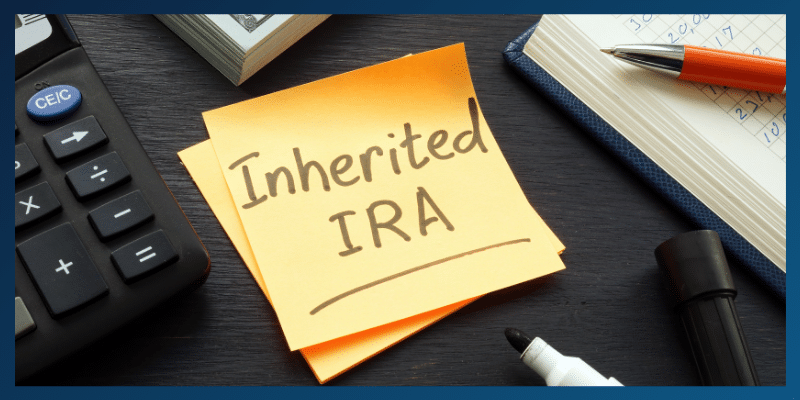
As you navigate through different life stages, retirement planning will likely be one of the most important components of your overall financial plan. Whether you have just graduated and taken your first job, are starting a family, are enjoying your peak earning years, or are preparing to retire, understanding the financial challenges and opportunities at each stage is crucial. Your employer-sponsored retirement plan can play a key role in your financial strategies, and being aware of this can help you make informed decisions for your future.
Here’s how to manage your retirement savings plan through various life events:
Just Starting Out
If you are a young adult just starting your first job, chances are you face several different challenges. College loans, rent, and car payments may compete for your hard-earned yet entry-level paycheck. How can you consider putting aside money in your employer-sponsored retirement plan now? After all, retirement is decades away — you have plenty of time, right? But remember, the best time to start planning for your future is now when you have the power of time and compounding on your side.
Through the power of compounding, you can put time to work for you. Compounding happens when your plan contribution dollars earn returns that are reinvested into your account, potentially earning returns themselves. Over time, the process can snowball, providing you with a secure and comfortable retirement.
Example: At age 20, you begin investing $3,000 each year for retirement. At age 65, you would have invested $135,000. Assuming a 6% average annual return, you would have accumulated a total of $638,231 by age 65. However, if you wait until age 45 to begin investing that $3,000 annually and earn the same 6% return, by age 65, you would have invested $60,000 and accumulated a total of $110,357. Even though you would have invested $75,000 more by starting earlier, you would have accumulated more than an additional half a million dollars overall.
Even if you can’t afford to contribute $3,000 a year ($250/month) to your plan, remember that even small amounts can add up through compounding. So, enroll in your plan and contribute whatever you can, and then try to increase your contribution amount by a percentage point or two every year until you hit your plan’s maximum contribution limit. Moving forward, as debts are paid off and your salary increases, redirect some of those extra dollars into your plan.
Getting Married and Starting a Family
When you marry and start a family, financial obligations multiply, from mortgage payments to childcare expenses. It’s crucial to maintain your retirement contributions despite these pressures. If you plan to take a career break for family reasons, consider increasing your contributions before and after your leave. Your spouse can also contribute more during your break. Even though you can still invest aggressively, reassess your risk tolerance regularly.
Lastly, while you’re still approximately 20 to 30 years away from retirement, you have decades to ride out market swings. That means you may still be able to invest relatively aggressively in your plan. But be sure you fully reassess your ability to withstand investment risk before making any decisions.
Reaching Your Peak Earning Years
The latter stage of your career can bring various challenges and opportunities. College bills may be making their way to your mailbox or inbox. You may have to take time off unexpectedly to care for aging parents, a spouse, or yourself. As your body begins to exhibit the effects of a well-lived life, healthcare expenses consume a larger portion of your budget. And those pesky home and car repairs never seem to go away.
On the other hand, with 20+ years of work experience behind you, you could be reaping the benefits of the highest salary you’ve ever earned.
With more income, now may be an ideal time to kick your retirement savings plan into high gear. If you’re 50 or older, you may take advantage of catch-up contributions, which allow you to contribute up to $30,500 to your employer-sponsored plan in 2024 versus a maximum of $23,000 for most everyone else. (Note that some types of plans have different limits.)
In addition, if you haven’t met with a financial professional, now may be a good time to do so. A financial professional can help you refine your savings goal and investment allocations and help you plan for the next stage.
Preparing to Retire
With just a few short years until you celebrate the major step into retirement, it’s time to consider when and how you will begin drawing down your retirement plan assets. You might also want to adjust your investment allocations with an eye toward asset protection (although it’s still important to pursue growth to keep up with the rising cost of living). A financial professional can become a very important ally in helping to address the various decisions you will face at this important juncture.
You may want to discuss:
- Health care needs and costs, as well as retiree health insurance
- Income-producing investment vehicles
- Tax rates and living expenses in your desired retirement location
- Part-time work or other sources of additional income
- Estate planning
You’ll also want to familiarize yourself with the required minimum distributions (RMDs). The IRS requires that you begin drawing down your retirement plan assets by April 1 of the year following the year you reach age 73. If you continue to work for your employer past age 73, you may delay RMDs from that plan until the year following your actual retirement.2
Other Considerations
You may face other important decisions involving your retirement savings plan throughout your career. For example, if your plan provides for Roth contributions, you’ll want to review the differences between these and traditional pre-tax contributions to determine the best strategy for your situation. While pre-tax contributions offer an up-front tax benefit, you’ll have to pay taxes on distributions when you receive them. On the other hand, Roth contributions do not provide an up-front tax benefit, but qualified withdrawals will be tax-free.3 Whether you contribute to a pre-tax account, a Roth account, or both will depend on several factors.
At times, you might face financial difficulty that will tempt you to take a loan or hardship withdrawal from your account, if these options are available in your plan. If you are in this situation, consider a loan or hardship withdrawal as a last resort. These moves will not only slow your retirement saving progress but could hurt your income tax obligation.4
Find The Best Financial Advisor For You
Finally, review your retirement plan alongside your other savings and investment strategies as you decide. While it’s generally not advisable to make frequent changes in your retirement plan investment mix, you will want to review your plan’s portfolio at least once each year and as major events (e.g., marriage, divorce, birth of a child, job change) occur throughout your life.
At Mission Wealth, you can work with a financial advisor or tax professional who can provide personalized advice based on your situation. Contact us today for a free consultation.
Disclosures:
These hypothetical examples of mathematical principles do not represent any specific investment and should not be considered financial advice. Investment returns will fluctuate and cannot be guaranteed. All investing involves risk, including the possible loss of principal, and there can be no assurance that any investment strategy will be successful. Investments offering a higher potential rate of return also involve a higher level of risk.
1Asset allocation is a method for managing investment risk; it does not guarantee a profit or protect against a loss.
2Prior to 2020, the RMD age was 70½. From 2020 to 2022, it was 72. If you reach age 74 after December 31, 2032, your RMD age is 75.
3Qualified withdrawals from Roth accounts are those made after a five-year waiting period and you either reach age 59½, die, or become disabled.
4Withdrawals from your employer-sponsored retirement savings plan before age 59½ may be subject to regular income taxes and a 10% penalty tax (unless an exception applies).

Mission Wealth Can Help You Retire with Confidence
This may be your first time retiring, but it's not ours. Careful coordination is required to ensure your retirement income strategy is tax-efficient and sustainable. You will face many decisions when retiring. Let us guide you through your options and create a plan.
Mission Wealth’s vision is to provide caring advice that empowers families to achieve their life dreams. Our founders were pioneers in the industry when they embraced the client-first principles of objective advice, comprehensive financial planning, coordination with other professional advisors, and proactive service. We are fiduciaries, and our holistic planning process provides clarity and confidence. For more information on Mission Wealth, please visit missionwealth.com.
To schedule a complimentary meeting with a Mission Wealth financial advisor, contact us today at (805) 882-2360.
Mission Wealth is a Registered Investment Advisor. This commentary reflects the personal opinions, viewpoints, and analyses of the Mission Wealth employees providing such comments. It should not be regarded as a description of advisory services provided by Mission Wealth or performance returns of any Mission Wealth client. The views reflected in the commentary are subject to change at any time without notice. Nothing in this commentary constitutes investment advice, performance data, or any recommendation that any particular security, portfolio of securities, transaction, or investment strategy is suitable for any specific person. Any mention of a particular security and related performance data is not a recommendation to buy or sell that security. Mission Wealth manages its clients’ accounts using a variety of investment techniques and strategies, which are not necessarily discussed in the commentary. Investments in securities involve the risk of loss. Past performance is no guarantee of future results.
Let's Keep in Touch!
Subscribe for exclusive content and timely tips to empower you on your financial journey. Our communications go straight into your inbox, so you'll never miss out on expert advice that can positively impact your life.Recent Retirement Articles

6 Financial Steps to Take if You’ve Been Impacted by a Corporate Layoff
September 4, 2025
Holding On to These Moments: Allyn’s Retirement Story
August 27, 2025


